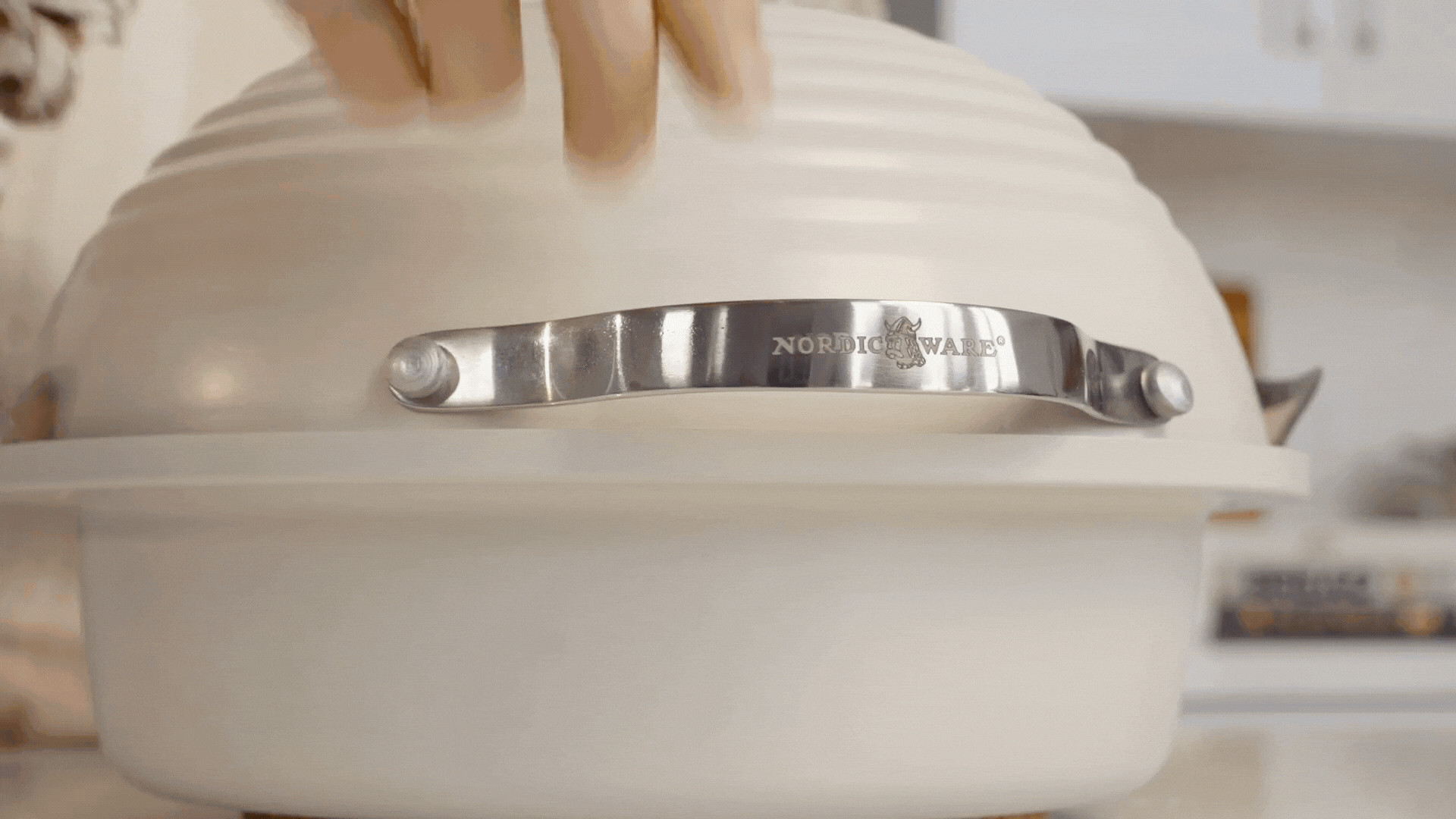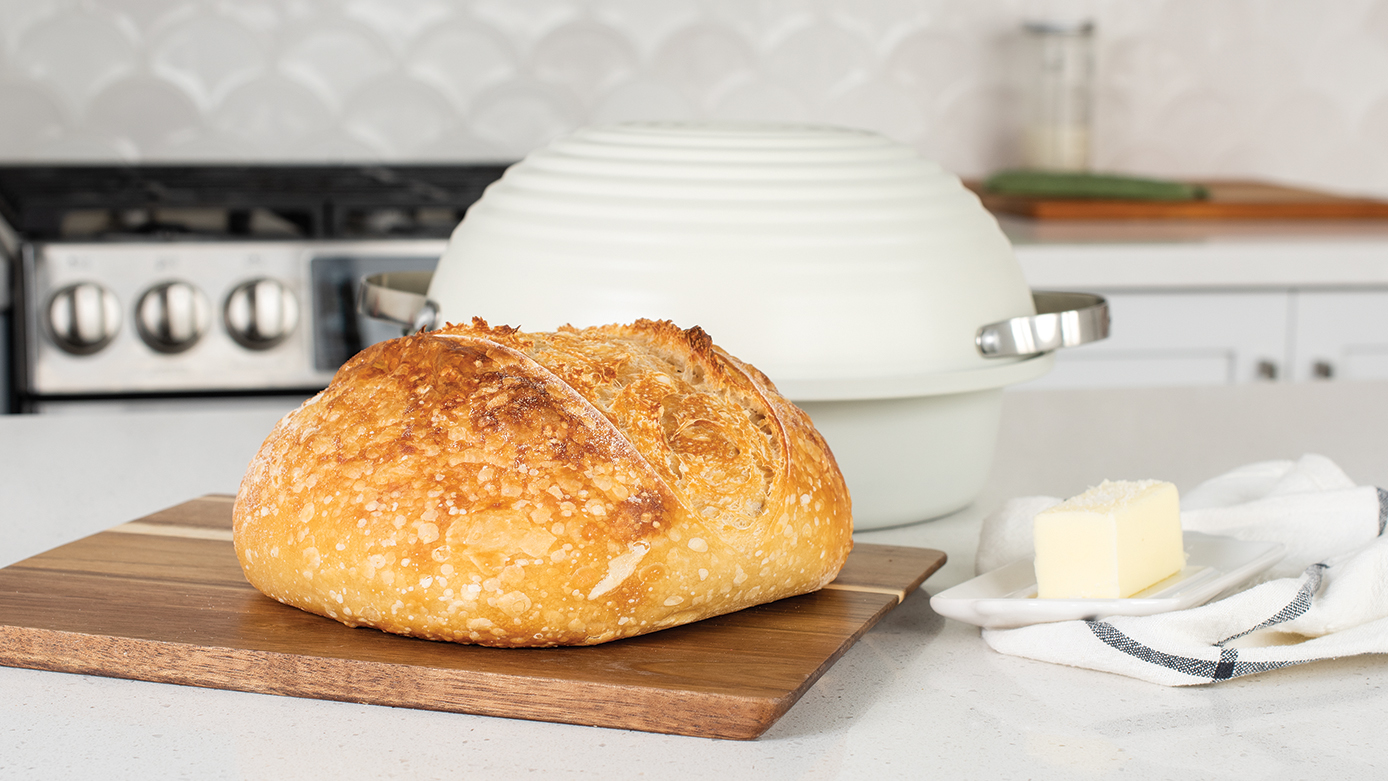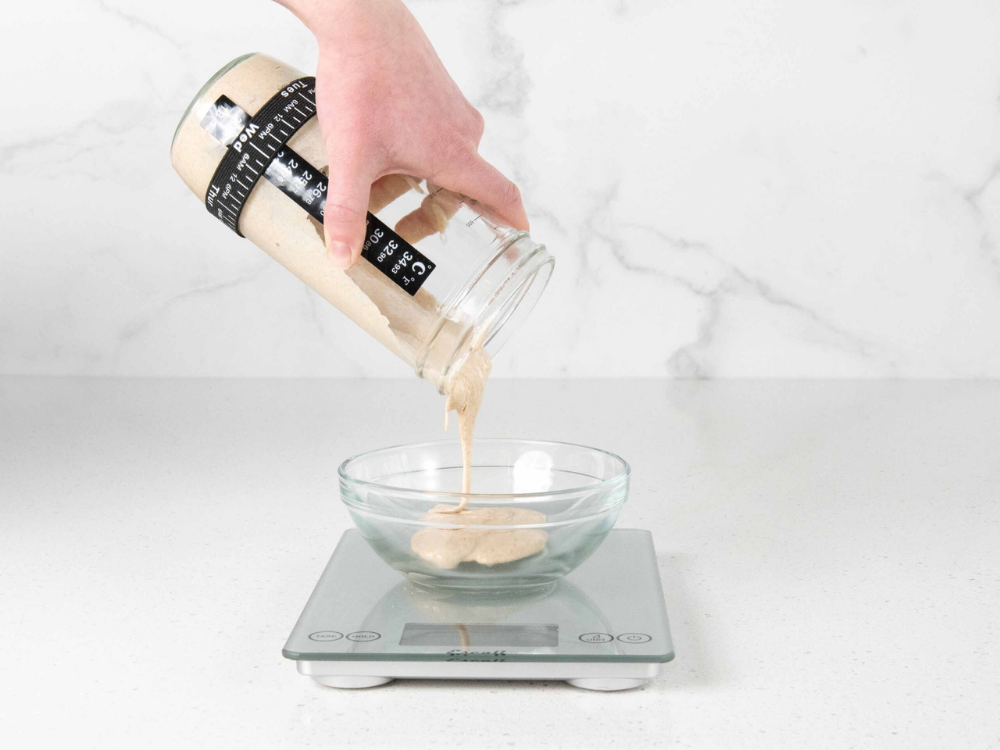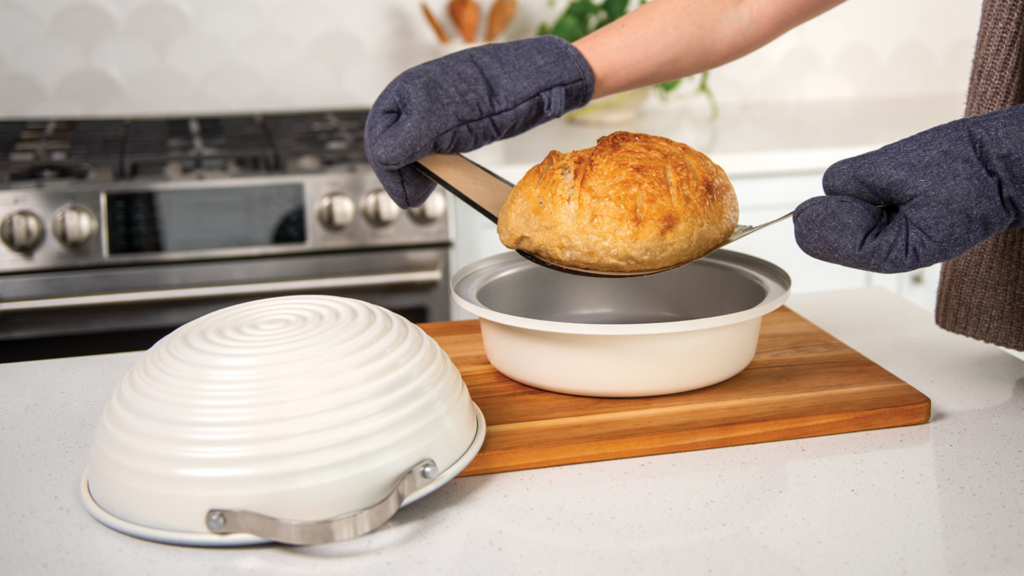Sourdough Bread: Baking in Aluminized Steel vs. Cast Iron – Which Is Best?
Baking the perfect sourdough bread involves many factors, and one key decision is choosing the right baking pan. Contrary to popular belief, sourdough bread can be baked in all different types of bakeware from aluminized steel to clay to enameled cast iron. Each one has their unique properties that affect the bread’s texture, rise, and crust, but they all succeed in creating the same thing: beautiful loaves of sourdough bread. In this post, we’ll explore the differences between baking sourdough in aluminized steel versus cast iron and help you decide which one is best for your baking style and budget.
Why Choosing the Right Bakeware Matters for Sourdough Bread
When baking sourdough, the bakeware plays a crucial role in how the bread rises, bakes, and ultimately looks. The material of your baking vessel impacts heat retention, moisture distribution, and crust formation. Sourdough needs a good balance of heat and steam to create the perfect crust and crumb, and the right pan can help achieve that.
Additionally, it is important to find the baking vessel that fits your bread baking needs and skill level as well as budget. Beginning sourdough bakers might want to start with a more cost-effective aluminized steel pan. For more experienced bakers willing to make a significant investment, enameled cast iron may be a great option.
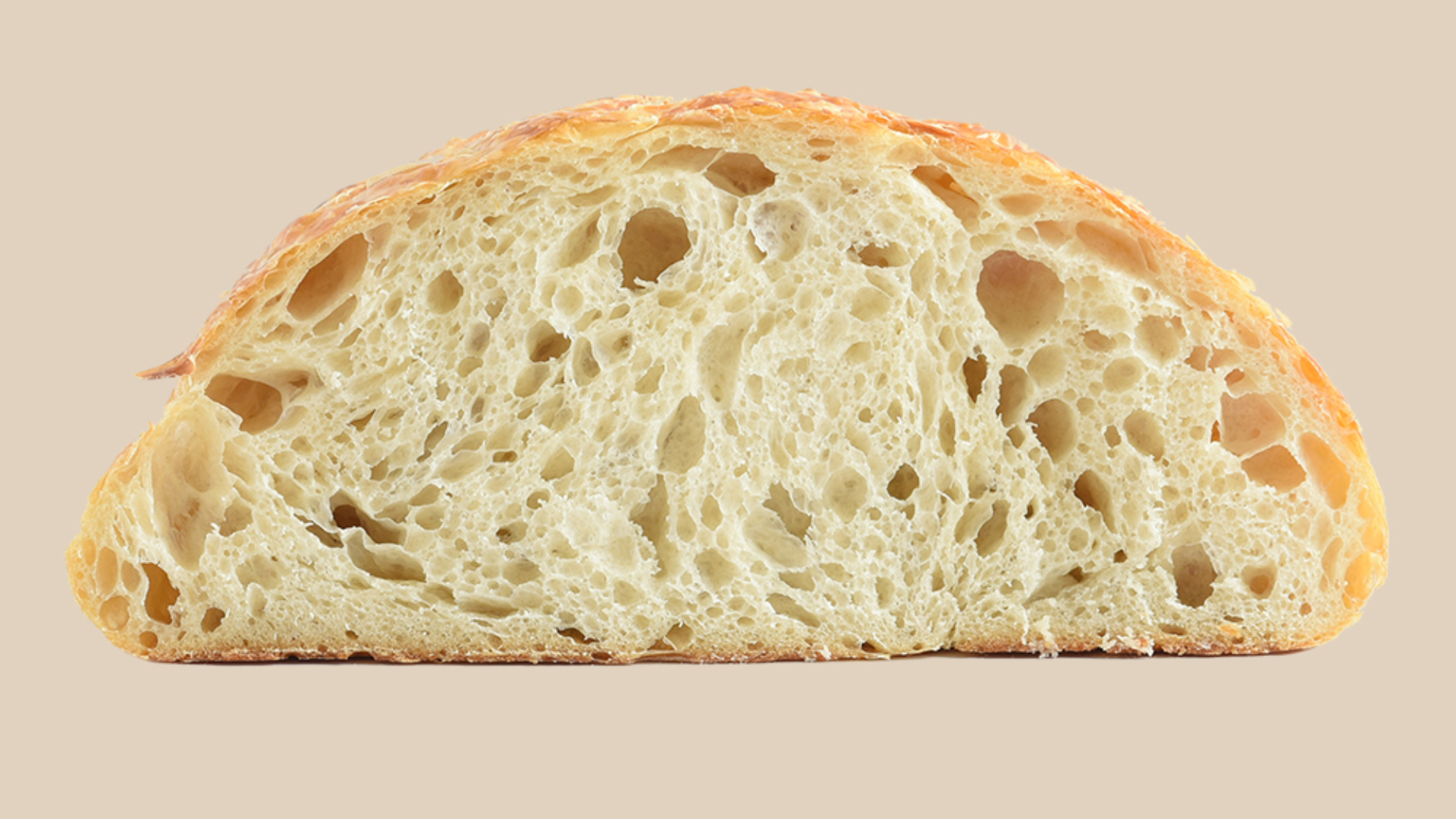
Aluminized Steel Bakeware for Sourdough Bread: Pros and Cons
Pros of Aluminized Steel Bakeware:
- Easy to lift: Aluminized steel is lighter than cast iron, making it easier to handle and move in and out of the oven. With bread dough inside, the pan plus lid weighs under 5 lbs.
- Rapid Heating: Aluminized steel heats quickly and evenly which helps achieve the desired rise and crust on your sourdough bread.
- No pre-heating required: Because the pan heats to baking temp within 2 minutes, there is no need to place it into the oven for a lengthy duration before baking,
- Energy efficient: With no preheating necessary, you will consume less energy because your oven will be on for a shorter duration overall when you bake with a rapid-heating pan material.
- Cost effective: Our quality aluminized steel pan comes in an all-in-one kit with 7-8 other tools so you can get started baking bread right away compared to a more expesnive single cast iron pan.
Cons of Aluminized Steel Bakeware:
- Less Retention of Heat: Aluminized steel doesn’t retain heat for as long as cast iron,
- Softer material: If you drop the pan, it may dent
Enameled Cast Iron Pans for Sourdough Bread: Pros and Cons
Pros of Cast Iron Bakeware:
- Good Heat Retention: Cast iron holds heat well, ensuring an even bake and a crisp crust.
- Durable: Enameled cast iron is incredibly durable making it resilient to dents or scratches.
Cons of Cast Iron Bakeware:
- Weight: Cast iron is significantly heavier than aluminized steel, which can make it difficult to handle safely, especially when hot. An empty cast iron bread baking pan can weigh 12-14 pounds, and over 15 once dough is added. Special handling is needed if you have a glass top stove, which can be affected by a heavy and hot pan being placed on it.
- Slower to Heat: Cast iron takes longer to heat up compared to other materials. Pre-heating time can be 20-40 minutes depending on the pan, resulting in greater energy use.
- Higher Cost: Enameled cast iron bakeware tends to be more expensive than alternatives.
- Chipping: Enameled cast iron can be prone to chipping if it bumps against a hard piece of metal such as cast burner grate or another enameled pan.
Final Verdict: Which Is Best for Baking Sourdough Bread?
Choosing between aluminized steel and enameled cast iron for sourdough bread largely depends on your preferences and what qualities are most important to you.
- If you’re starting to explore the world of sourdough and you’re looking for a cost-effective, easy-to-handle option and are seeking an energy-efficient pan that heats quickly, an aluminized steel bread pan is likely the best choice for you.
- If you’re after an ultra crispy crust do not mind handling the significantly heavier weight, an enameled cast iron bread pan is likely a good option. Though it comes with a higher price tag, serious sourdough bakers may be willing to make the investment.
Frequently Asked Questions (FAQs)
Does my Nordic Ware bread pan need preheating?
Because it’s made of rapid-heating aluminized steel, our bread baking pan and lid do not need to be preheated. Place proofed dough into a room temperature pan, put lid on top, and place into your pre-heated oven. We don’t recommend heating your pan empty, as it’s not necessary.
Can I use aluminized steel for no-knead sourdough?
Yes! Aluminized steel is an excellent choice for no-knead sourdough and yeasted breads. It offers superior heat conductivity for even baking and beautifully golden crusts.
Our Basic Simply Sourdough Bread Baking Kit includes a 22 page Quick Start Guide featuring an easy no-knead sourdough recipe that is perfect for beginner bread bakers looking to dive in with confidence.
Looking to refine your skills even more? The Deluxe Simply Sourdough Kit includes all the tools from the Basic Kit, plus an Escali Digital Baking Scale for precision measurement and consistent results. 
Learn more about our Simply Sourdough Bread Baking Kits and start your artisan bread baking journey today.



